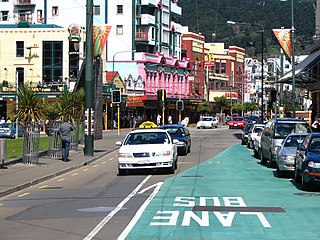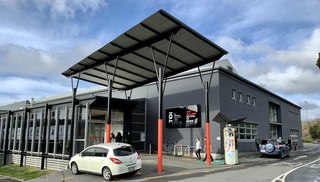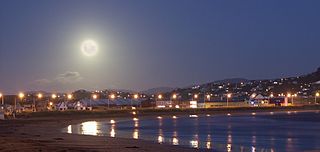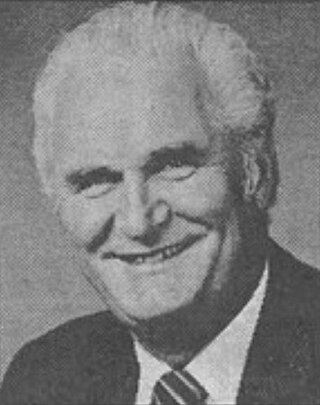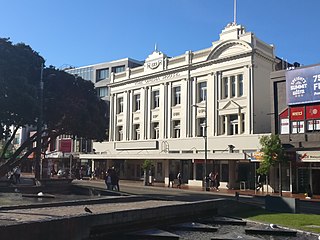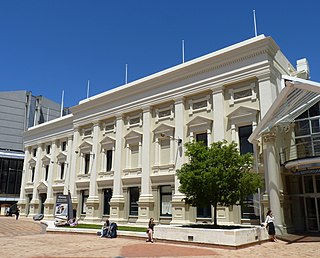The Winter Show Building
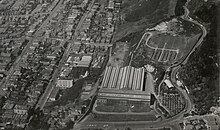
Part of the site which had been used as a rubbish dump (nicknamed 'Jam Tin Gully') was cleaned up, other areas were levelled, and a road through the site was relocated. [18] Funding for the project came from investment by members of the Wellington Show Association, profits from previous shows, and debentures sold to the public. [18] Future income was expected to come from not just from winter shows, but from sports meetings and other events to be held in the new building and grounds. [18]
The £40,000 contract to construct the new building was granted to August Swanson, and work began early in 1928. [19] The building was constructed from timber, corrugated iron, and asbestos sheets, with concrete arches supporting the roof. [18] Piles for the building had to be driven to an average depth of 40 ft, through years-worth of rubbish dumped in the gully. [7] It had been hoped to open the building in time for the 1928 winter show, but on 29 June 1928 a 20-ton reinforced concrete arch section of the partially-constructed building was knocked over by high winds, causing thousands of pounds worth of damage. [20] The Winter Show Building was officially opened on 19 September 1928. [7] The show building was 300 ft by 400 ft and had five acres of floor space. [18] [21] There was one main floor, basically a shell with roofing covering a vast open area, and two big basements to be used as storage for fittings and as a livestock exhibition area. [18] The main floor consisted of five large halls. Each hall's roof was supported by large concrete spans needing no central supports, to allow a large unbroken floor area for exhibitions or sports. There was a mezzanine floor above the halls, intended for a tea room and dancing, with a promenade giving elevated views of the four halls. [22] [21] An ornate concrete façade with turrets and a dome had been designed for the building's frontage to John Street, but this was never built. [7] [21] [23]
On 19 June 1956 a fire broke out in the office area of the building and part of the roof fell in, injuring two firemen. [24]
Apart from its use for the Winter Show, the building was used for many activities over the years including sports training, a miniature rifle club shooting range, [25] a circus, [26] roller skating, [27] and music concerts. [28] During World War 2 the Winter Show Building was used as a base for military training. [29] For many years the Winter Show also featured an outdoor area with fairground rides and sideshows. [30]

